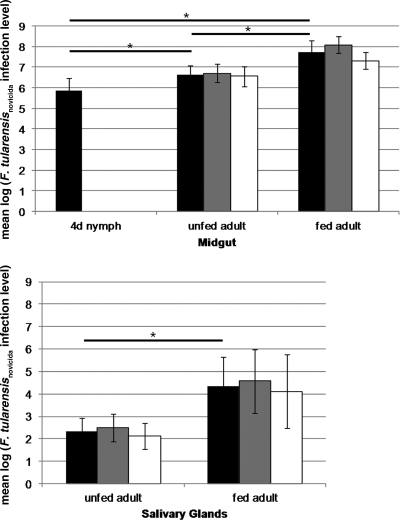Fig. 2.
F. tularensis subsp. novicida replication in ticks. Ticks were exposed to F. tularensis subsp. novicida (ΔISftu2 mutant) as nymphs feeding on bacteremic mice. F. tularensis subsp. novicida infection was quantified in nymph (n = 23) midguts 4 days after feeding (4d nymph), unfed adult (n = 20) midguts and salivary glands, and fed adult (n = 20) midguts and salivary glands. For adult-stage ticks, 10 females and 10 males were examined. The mean log F. tularensis subsp. novicida infection level ± standard deviation (SD) in the midgut and salivary gland at the different time points examined are presented for total ticks (black bar), female ticks (gray bar), and male ticks (white bar). The F. tularensis subsp. novicida infection level increased significantly in the midguts of ticks both after the molt and after the adult blood meal. Likewise, the F. tularensis subsp. novicida infection level in the salivary glands increased significantly after the adult blood meal.

